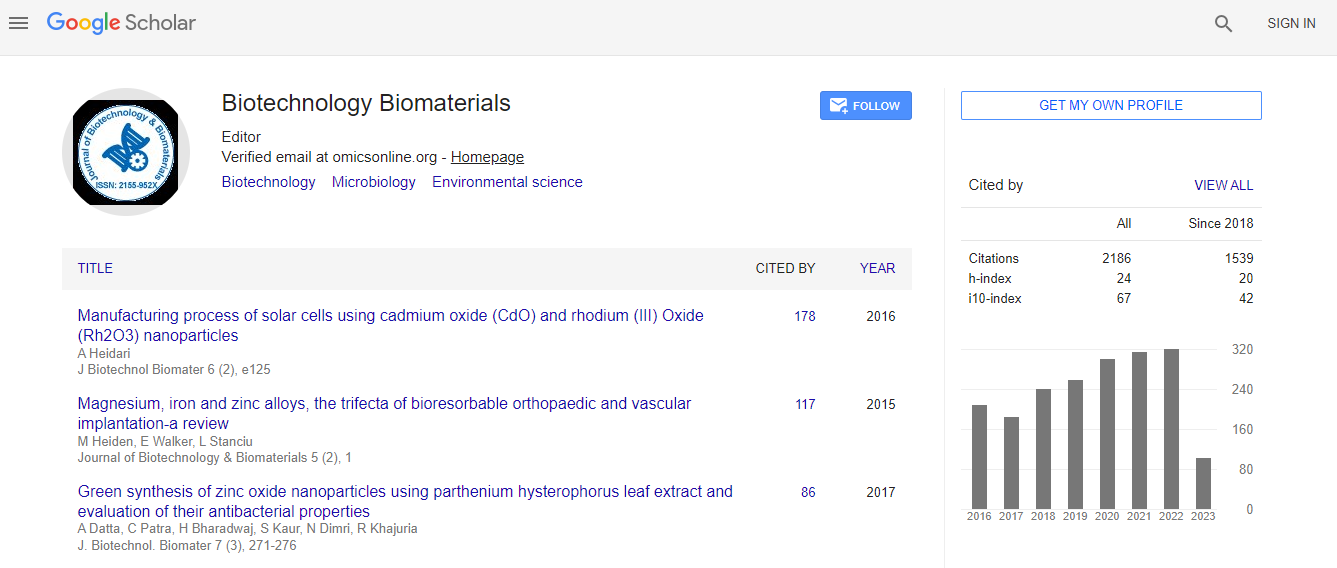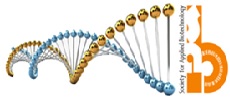Our Group organises 3000+ Global Conferenceseries Events every year across USA, Europe & Asia with support from 1000 more scientific Societies and Publishes 700+ Open Access Journals which contains over 50000 eminent personalities, reputed scientists as editorial board members.
Open Access Journals gaining more Readers and Citations
700 Journals and 15,000,000 Readers Each Journal is getting 25,000+ Readers
Google Scholar citation report
Citations : 3330
Journal of Biotechnology & Biomaterials received 3330 citations as per Google Scholar report
Indexed In
- Index Copernicus
- Google Scholar
- Sherpa Romeo
- Open J Gate
- Genamics JournalSeek
- Academic Keys
- ResearchBible
- China National Knowledge Infrastructure (CNKI)
- Access to Global Online Research in Agriculture (AGORA)
- Electronic Journals Library
- RefSeek
- Hamdard University
- EBSCO A-Z
- OCLC- WorldCat
- SWB online catalog
- Virtual Library of Biology (vifabio)
- Publons
- Geneva Foundation for Medical Education and Research
- Euro Pub
- ICMJE
Useful Links
Recommended Journals
Related Subjects
Share This Page
Application of natural dye (neem) on silk fabric before and after exposure to UV/ozone
12th Euro Biotechnology Congress
Nabawia A Abd Elzaher, Ebtsam S Al-Amoudy and Amal A El-Ebissy
National Institute for Standards, Egypt King Abdulaziz University, KSA
Posters & Accepted Abstracts: J Biotechnol Biomater
Abstract
Neem plant as a source of natural dye was used to dye silk fabrics. This plant has not been exploited as natural dye by far. Optimization of natural dye extraction from leaves with respect to dye bath concentration to aid exhaustion was done. The effect of changed dye bath concentration on the reflectance spectra was followed using spectrophotometer tool. The changes in the optical parameters including the CIE tristimulus values, color parameters, absorption coefficient, absorption edge, band tail width, optical band gap, extinction coefficient and color strength were determined as a function of UV/ozone exposure times. The data obtained indicated that the color parameters were highly affected by changing dye concentration by this new dye. Finding shows that the natural dye extracted from leaves have good potential in textiles dyeing and can be exploited further. So, the present work gives the chance to produce different hues from a new traditional natural dye to improve the natural dyeing cultural heritage to meet the environmental future demands technology of high quality fantastic dyed pattern through an economical point of view.Biography
Email: nabawia@yahoo.com

 Spanish
Spanish  Chinese
Chinese  Russian
Russian  German
German  French
French  Japanese
Japanese  Portuguese
Portuguese  Hindi
Hindi 
